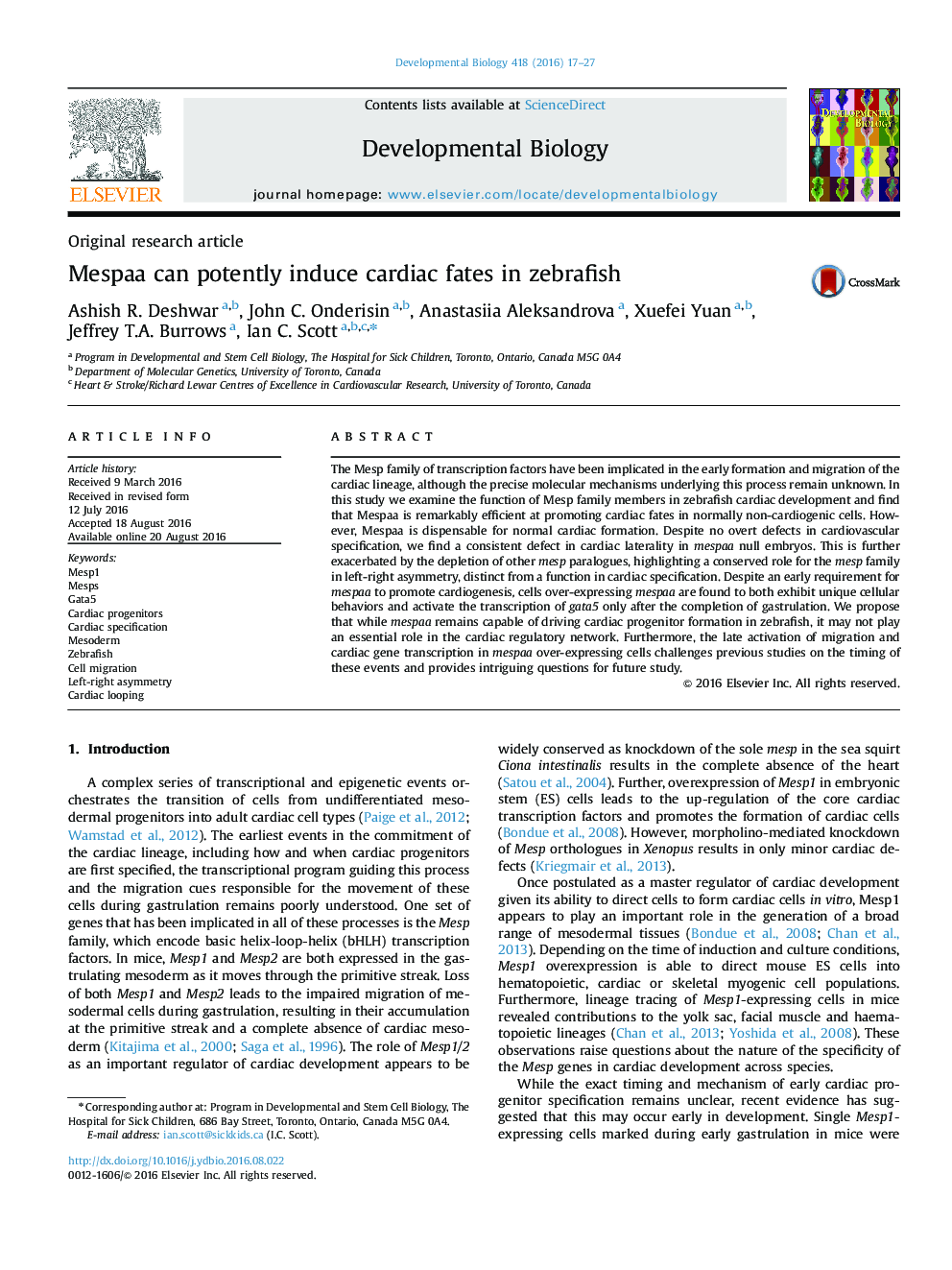| Article ID | Journal | Published Year | Pages | File Type |
|---|---|---|---|---|
| 5531993 | Developmental Biology | 2016 | 11 Pages |
â¢Mespaa potently programs non-cardiogenic cells to a cardiac fate in zebrafish.â¢Mespaa acts via Gata5/6 during cardiac reprogramming.â¢Surprisingly, Mespaa is not required for cardiac development.â¢Mespaa and other Mesps are required for proper cardiac laterality in zebrafish.
The Mesp family of transcription factors have been implicated in the early formation and migration of the cardiac lineage, although the precise molecular mechanisms underlying this process remain unknown. In this study we examine the function of Mesp family members in zebrafish cardiac development and find that Mespaa is remarkably efficient at promoting cardiac fates in normally non-cardiogenic cells. However, Mespaa is dispensable for normal cardiac formation. Despite no overt defects in cardiovascular specification, we find a consistent defect in cardiac laterality in mespaa null embryos. This is further exacerbated by the depletion of other mesp paralogues, highlighting a conserved role for the mesp family in left-right asymmetry, distinct from a function in cardiac specification. Despite an early requirement for mespaa to promote cardiogenesis, cells over-expressing mespaa are found to both exhibit unique cellular behaviors and activate the transcription of gata5 only after the completion of gastrulation. We propose that while mespaa remains capable of driving cardiac progenitor formation in zebrafish, it may not play an essential role in the cardiac regulatory network. Furthermore, the late activation of migration and cardiac gene transcription in mespaa over-expressing cells challenges previous studies on the timing of these events and provides intriguing questions for future study.
